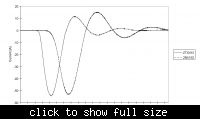MedicMamat
Newbie level 6
:razz:hi
need a driver circuit for a 100 mW red laser diode (laser pointer) to produce a single 25ns pulse. the repetition doesnt have to be high.
your suggestions would be very much appreciated.
thank you in advance
need a driver circuit for a 100 mW red laser diode (laser pointer) to produce a single 25ns pulse. the repetition doesnt have to be high.
your suggestions would be very much appreciated.
thank you in advance
